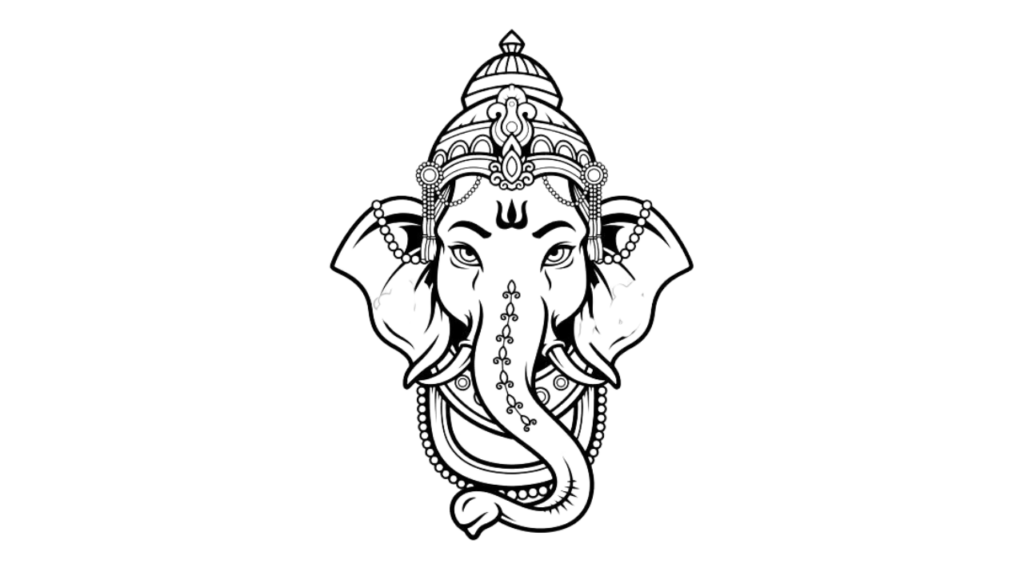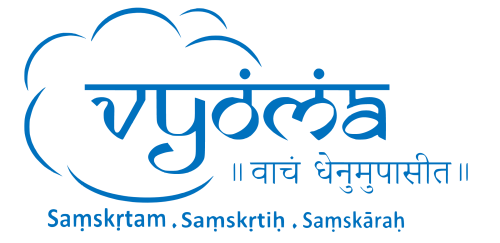
Historical Significance of Ganapati
The very thought of Gaṇeśa brings to the mind the festival of Gaṇeśa caturthī. The festival fills one with great delight and the atmosphere is filled with happiness everywhere around the country. From clay mūrti-s to colourful mūrti-s, पाशाङ्कुशधर (pāśāṅkuśadhara) mūrti-s to football playing mūrti-s and miniature mūrti-s to sky-scraping mūrti-s adorn homes and paṇḍals across the country. The glee, pomp and fanfare of today of the festival could be attributed to Bāla Gaṅgādhar Tilak during 1890s who enjoined collective Gaṇeśa Pooja festivity to foster common action among people towards freedom struggle. Gaṇeśa is called मङ्गलमूर्ति (maṅgalamūrti, especially in Mahārāṣṭra) and is known to bring auspiciousness in all endeavours undertaken. Given the familiarity of the devatā across the globe with various theories and interpretations, the origin and symbolism of Gaṇeśa is largely unknown from the land and culture of the devatā where he manifested. Here we discuss the origin and symbolism of Gaṇeśa from the world’s oldest text, the Ṛgveda and the greatly thriving ancient civilization of the world, the Indus-Sarasvati civilization. Among the pantheon of gods in the Vaidika Dharma, Gaṇapati holds a distinct and important position, addressed as the ‘Leader of the Group’. The Ṛgveda praises Gaṇapati thus –
ग॒णानां॑ त्वा ग॒णप॑तिं हवामहे क॒विं क॑वी॒नामु॑प॒मश्र॑वस्तमम् ।
ज्ये॒ष्ठ॒राजं॒ ब्रह्म॑णां ब्रह्मणस्पत॒ आ न॑: शृ॒ण्वन्नू॒तिभि॑: सीद॒ साद॑नम् ॥
gaṇānāṃ tvā gaṇapatiṃ havāmahe kaviṃ kavīnāmupamaśravastamam।
jyeṣṭharājaṃ brahmaṇāṃ brahmaṇaspata ā na: śṛṇvannūtibhi: sīda sādanam॥
We invoke you Gaṇapati, leader of the host (mantrā-s);
a superb seer (kavi) among seers, who causes the hearing of divine inspiration,
who is the supreme King, who is the lord of the mantra (Brahmaṇaspati),
may he hear us; may he be seated (āsīda) on the seat within (sādanam)
with his protections (or his powers) which increase us (ūtibhiḥ).
Gaṇapati is worshipped across all Asian countries from Myanmar, Thailand, Indonesia, Tibet to Japan and among various darśana-s such as Jainism and Buddhism.
Ganapati vs Brahmanaspati
Who is this Gaṇapati? The word Brahmaṇaspati in Ṛgveda is none other than Gaṇapati himself. Brahma means ‘mantra’. The one who is the lord of mantra-s is this Brahmaṇaspati – Gaṇapati. He is popularly known as the destroyer of hurdles and ironically its creator too. By his loud ‘ramba’ sound, he destroys hurdles for those who pray to him, due to which he is called as Heramba. He creates troubles for those who are on the wrong path to bring them back on to the right path, due to which he is called Vighnakarta.
In the path of yoga, he is one of the most important devatā-s who is encountered at गजकुण्डप्रदेश (Gajakuṇḍapradeśa), the mūlādhāra. The Gaṇeśātharvaśīrṣa proclaims –
त्वं मूलाधारेस्थितोऽसि नित्यं।
tvaṃ mūlādhāresthito’si nityaṃ
You reside in the muḷādhāra forever
The region responsible for creation. The yogi attains the power of creation upon the vision of Mahāgaṇapati in this region. The colour of this region is red, depicting creation. Hence, the colour of Gaṇapati is traditionally red.
प्रणवस्वरूपवक्रतुण्डम्
praṇavasvarūpavakratuṇḍam
The form of Gaṇapati is that of an elephant-face which resembles the praṇavākāra – ॐ (OM)। Along with the form, the sound that the elephant trumpets is also ॐ (OM)। The Ṛgveda states –
ह॒स्तिना॑द-प्र॒बोधि॑नीम्
hastināda-prabodhinīm
If the curve of the tusk visualised is on the right hand-side, he provides mokṣa. If on the left hand-side, he provides all luxuries. If the yogi enters tamo-guṇa kṣetra, Gaṇapati is seen as Gajāsura – निरस्तदैत्यकुञ्जरम् (nirastadaityakuñjaram). Hence, Gaṇapati provides from earthly abundance to spiritual abundance and a holy knock if necessary.
Symbolism and Yogic Experience of Ganapati
Gaṇapati is always seen to have a big belly. He is called as महोदार (mahodāra) (different from महोदर – mahodara); which means ‘most generous’, ‘magnanimous’, ‘graceful’/ ‘mighty’, ‘most powerful’.
His ornaments are snakes, symbolising his control over all prāṇaśakti-s. He bestows his bhakta with health and wealth.
His chowry-like (चामर – cāmara) flapping large ears symbolises great receptivity bestowed on his bhakta-s. It also conveys his eagerness to listen to the prayers from his bhakta-s.
A single tusk symbolises him goading his devotees towards right action.
The devatā is symbolically seen with a rat and sometimes shown to ride on it as his vehicle, laughing at which, the purāṇa states, the Candra (moon) was cursed. The word for rat in samskṛta is मूषकः (mūṣakaḥ)। मूषति (mūṣati) means ‘to steal’. The aspect of creation also pre-supposes destruction or taking away of old forms. The master and controller of this creation and destruction is Gaṇapati.
Gaṇapati is offered with बर्हि (barhi), the Kuśa grass. The बर् (bar) of बर्हि (barhi) stems from बृ (bṛ) root which means ‘vastness’. Another important offering made to Gaṇapati is the मोदकम् (modakam) which stems from the root मुद् (mud) which means ‘delight’. We surrender these to Mahāgaṇapati and obtain his blessings, both material and spiritual.
The Siddhivināyaka form (of the 32 forms) is the one being worshipped during Gaṇeśa caturthi festival. He is prayed with all purity and devotion with red flowers, upavīta, vastra, modaka, barhi, dhūpa, dīpa, etc. It is performed in the form of a vow (vrata). After the performance of prayers with such seriousness and the mūrti oozing signs of life, the Gaṇeśa mūrti is submerged in water! It appears absurd to give up on the mūrti and dissolve it in water, however pure the water is. The reason for this practice is not on the mental field to understand but a yogic experience. The Siddhivināyaka mūrti prayed to on the day of the festival is a form who remedies the bhakta’s तापत्रय (tāpatraya) (आध्यात्मिक (ādhyātmika), आधिभौतिक (ādhibhoutika), आधिदैविक (ādhidaivika))। These are remedied in a yogi who ascends from mūlādhāra (prakṛti-tattva) to maṇipura (jala-tattva). At the maṇipura he no more experiences these तापत्रय-s (tāpatraya-s). Siddhivināyaka mūrti aids this in his bhakta. To represent this externally, a siddhivināyaka mūrti made of mud (prakṛti-tattva) is immersed in water (jala-tattva) to signify the annulment of all तापत्रय-s (tāpatraya-s). This is the symbolism behind Gaṇeśa-visarjana which stems from the yogic-experience.
Mahāgaṇapati, hence, seen in his vision by Ṛṣi Gṛtsamada and recorded in the second maṇḍala of the Ṛgveda, is one of the most important and indispensable devatā for one’s spiritual growth and final अमृतत्त्वप्राप्तिः (amṛtattvaprāptiḥ).
Courses at Vyoma On Bhagavān Gaṇapati –
- Learn To Do Gaṇeśa Pooja
- Six Special Preparations for Suhṛd Gaṇeśa
- Experience Sri Ganesha (By understanding the meanings of Ashtottarashatanama)
- Learn To Chant Shri Gaṇeśa Sahasranāma
References
- ಭಾರತೀಯರ ಹಬ್ಬ ಹರಿದಿನಗಳು, ಶ್ರೀ ಶ್ರೀ ರಂಗಪ್ರಿಯ ಶ್ರೀ ಶ್ರೀಃ, Astanga Yoga Vijnana Mandira, 2006.
- Gaṇapati, Prof. R. L. Kashyap, Sri Aurobindo Kapali Sastry Institute of Vedic Culture, 2012.

Excellent article.
Excellent and very informative article
Namaste, this is one of the most informative and apt article on the auspicious occasion. Beautifully written.